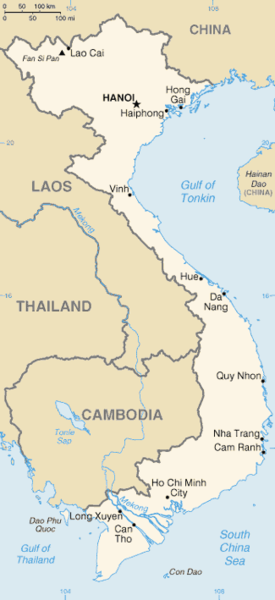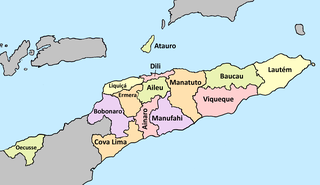Related Research Articles

Sex trafficking is human trafficking for the purpose of sexual exploitation. It has been called a form of modern slavery because of the way victims are forced into sexual acts non-consensually, in a form of sexual slavery. Perpetrators of the crime are called sex traffickers or pimps—people who manipulate victims to engage in various forms of commercial sex with paying customers. Sex traffickers use force, fraud, and coercion as they recruit, transport, and provide their victims as prostitutes. Sometimes victims are brought into a situation of dependency on their trafficker(s), financially or emotionally. Every aspect of sex trafficking is considered a crime, from acquisition to transportation and exploitation of victims. This includes any sexual exploitation of adults or minors, including child sex tourism (CST) and domestic minor sex trafficking (DMST).
Forced prostitution, also known as involuntary prostitution or compulsory prostitution, is prostitution or sexual slavery that takes place as a result of coercion by a third party. The terms "forced prostitution" or "enforced prostitution" appear in international and humanitarian conventions, such as the Rome Statute of the International Criminal Court, but have been inconsistently applied. "Forced prostitution" refers to conditions of control over a person who is coerced by another to engage in sexual activity.
Prostitution in Paraguay is legal for persons over the age of 18, but related activities such as brothel keeping are prohibited. Prostitution is common in the country. Brothels are also common, even some rural villages have a small bar/brothel on the outskirts.

Prostitution in Ukraine is illegal but widespread and largely ignored by the government. In recent times, Ukraine has become a popular prostitution and sex trafficking destination. Ukraine is a source, transit, and destination country for women and children trafficked transnationally for the purposes of commercial sexual exploitation. Ukraine's dissolution from the Soviet Union, saw the nation attempt to transition from a planned economy to a market economy. The transition process inflicted economic hardship in the nation, with nearly 80% of the population forced into poverty in the decade that followed its independence. Unemployment in Ukraine was growing at an increasing rate, with female unemployment rising to 64% by 1997. The economic decline in Ukraine made the nation vulnerable and forced many to depend on prostitution and trafficking as a source of income. Sex tourism rose as the country attracted greater numbers of foreign tourists.
Prostitution in Moldova is an illegal activity but is widespread and socially acceptable. UNAIDS estimate there to be 12,000 prostitutes in the country.
Vietnam is primarily a source country for women and children trafficked for commercial sexual exploitation and forced labor. Women and children are trafficked to the People’s Republic of China (P.R.C), Cambodia, Thailand, the Republic of Korea, Malaysia, Taiwan, and Macau for sexual exploitation. Vietnamese women are trafficked to the P.R.C., Taiwan, and the Republic of Korea via fraudulent or misrepresented marriages for commercial exploitation or forced labor. Vietnam is also a source country for men and women who migrate willingly and legally for work in the construction, fishing, or manufacturing sectors in Malaysia, Taiwan, P.R.C., Thailand, and the Middle East but subsequently face conditions of forced labor or debt bondage. Vietnam is a destination country for Cambodian children trafficked to urban centers for forced labor or commercial sexual exploitation. Vietnam has an internal trafficking problem with women and children from rural areas trafficked to urban centers for commercial sexual exploitation and forced labor. Vietnam is increasingly a destination for child sex tourism, with perpetrators from Japan, the Republic of Korea, the P.R.C., Taiwan, the UK, Australia, Europe, and the U.S. In 2007, an Australian non-governmental organization (NGO) uncovered 80 cases of commercial sexual exploitation of children by foreign tourists in the Sa Pa tourist area of Vietnam alone.
Sex trafficking in Thailand is human trafficking for the purpose of sexual exploitation and slavery that occurs in the Kingdom of Thailand. Thailand is a country of origin, destination, and transit for sex trafficking. The sexual exploitation of children in Thailand is a problem. In Thailand, close to 40,000 children under the age of 16 are believed to be in the sex trade, working in clubs, bars, and brothels.

Papua New Guinea is a source, destination, and transit country for men, women, and children subjected to trafficking in persons, specifically forced prostitution and forced labor. Women and children are subjected to commercial sexual exploitation and involuntary domestic servitude; trafficked men are forced to provide labor in logging and mining camps. Children, especially young girls from tribal areas, are most vulnerable to being pushed into commercial sexual exploitation or forced labor by members of their immediate family or tribe. Families traditionally sell girls into forced marriages to settle their debts, leaving them vulnerable to involuntary domestic servitude, and tribal leaders trade the exploitative labor and service of girls and women for guns and political advantage. Young girls sold into marriage are often forced into domestic servitude for the husband’s extended family. In more urban areas, some children from poorer families are prostituted by their parents or sold to brothels. Migrant women and teenage girls from Malaysia, Thailand, China, and the Philippines are subjected to forced prostitution, and men from China are transported to the country for forced labor.
Peru is a source, transit, and destination country for men, women, and children subjected to trafficking in persons, specifically forced labor and forced prostitution. Several thousand persons are estimated to be subjected to conditions of forced labor within Peru, mainly in mining, logging, agriculture, brick making, and domestic servitude. Many trafficking victims are women and girls from impoverished rural regions of the Amazon, recruited and coerced into prostitution in urban nightclubs, bars, and brothels, often through false employment offers or promises of education. Indigenous persons are particularly vulnerable to debt bondage. Forced child labor remains a problem, particularly in informal gold mines, cocaine production, and transportation. There were reports the terrorist group Sendero Luminoso, or Shining Path, recruited children as soldiers and drug mules. To a lesser extent, Peruvians are subjected to forced prostitution in Ecuador, Spain, Italy, Japan, and the United States, and forced labor in Argentina, Chile, and Brazil. Peru also is a destination country for some Ecuadorian and Bolivian females in forced prostitution, and some Bolivian citizens in conditions of forced labor. Child sex tourism is present in Iquitos, Madre de Dios, and Cuzco. Traffickers reportedly operate with impunity in certain regions where there is little or no government presence.
Human trafficking in Nepal is a growing criminal industry affecting multiple other countries beyond Nepal, primarily across Asia and the Middle East. Nepal is mainly a source country for men, women and children subjected to the forced labor and sex trafficking. U.S. State Department's Office to Monitor and Combat Trafficking in Persons placed the country in "Tier 2" in 2017.
Greece is a transit, source and destination country for women and children who are subjected to human trafficking, specifically forced prostitution and conditions of forced labor for men, women, and children. Female sex trafficking victims originate primarily in Eastern Europe and former Soviet bloc countries. Traffickers use physical, emotional, and sexual abuse for coercion. Greece's European Union membership, coupled with a shared border with Turkey, means the country sees massive flows of illegal immigrants looking to enter the EU. Traffickers also use Greece not only as a destination but also as transit stop and also as a source country where even Greek women are prostituted on the way to Western Europe.

Sex trafficking is defined as the transportation of persons by means of coercion, deception and/or forced into exploitative and slavery-like conditions and is commonly associated with organized crime.
Prostitution in East Timor is legal, but soliciting and third party involvement for profit or to facilitate prostitution is forbidden. Prostitution has become a problem since the country gained independence from Indonesia in 2002, especially in the capital, Dili. There are estimated to be 1,688 sex workers in the country.
.
Sex trafficking in Myanmar is human trafficking for the purpose of sexual exploitation and slavery that occurs in the Republic of the Union of Myanmar. Myanmar is primarily a source and transit country for sexually trafficked persons.

Sex trafficking in Vietnam is human trafficking for the purpose of sexual exploitation and slavery that occurs in the Socialist Republic of Vietnam. Vietnam is a source and, to a lesser extent, destination country for sexually trafficked persons.
Sex trafficking in Laos is human trafficking for the purpose of sexual exploitation and slavery that occurs in the Lao People's Democratic Republic. Laos is primarily an origin country for sexually trafficked persons.
Sex trafficking in Japan is human trafficking for the purpose of sexual exploitation and slavery that occurs in the country. Japan is a country of origin, destination, and transit for sexually trafficked persons.

Sex trafficking in South Korea is human trafficking for the purpose of sexual exploitation and slavery that occurs in the Republic of Korea. South Korea is a country of origin, destination, and transit for sexually trafficked persons. Sex trafficking victims in the country are from South Korea and foreigners.

Sex trafficking in East Timor is human trafficking for the purpose of sexual exploitation and slavery that occurs in the Democratic Republic of Timor-Leste.
References
- ↑ "Law on Public Peace and Order" (PDF). Assembly of Republic of Kosovo. 17 September 2009. Retrieved 18 March 2018.
- 1 2 Selmani, Arber (25 June 2016). "How Kosovo's Unregulated Sex Industry is a Danger to Public Health". Balkanist. Retrieved 18 March 2018.
- ↑ "Kosovo: Prostitution As A New Organized Crime Sideline". 21 June 2013.
- 1 2 3 "Kosovo UN troops 'fuel sex trade'". BBC. 6 May 2004. Retrieved 18 March 2018.
- ↑ "Head Of Serb Press Centre Says Prostitution In Kosovo Flourishing". Tanjug News Agency. 7 May 2004. Retrieved 18 March 2018.
- 1 2 Sadikaj, Beqir (25 March 2010). "The characteristics of prostitution in kosovo: a sociological analysis". Diritto (in Italian). Retrieved 18 March 2018.
- 1 2 3 "Kosovo 2017 Trafficking in Persons Report". U.S. Department of State. Archived from the original on 3 July 2017. Retrieved 18 March 2018.
 This article incorporates text from this source, which is in the public domain .
This article incorporates text from this source, which is in the public domain .